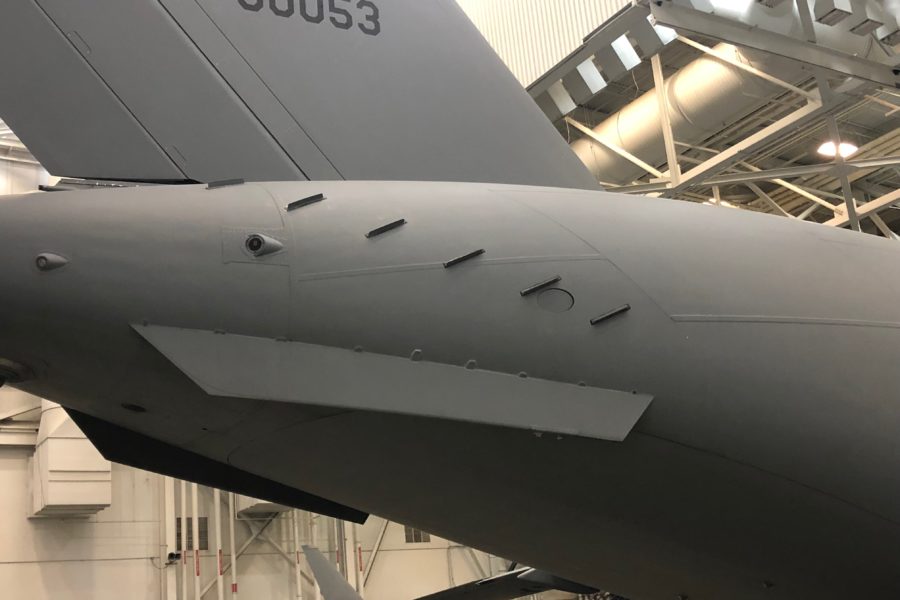The Air Force is considering making aerodynamic retrofits to one of its flagship cargo planes in an effort to save on fuel and be kinder to the environment.
As part of a project that has been in the works for years, the Air Force Research Laboratory (AFRL) and Air Force Life Cycle Management Center are in the process of airworthiness certification to fit microvanes on C-17s. Microvanes are small fin-like additions that attach to the fuselage to reduce drag. The Air Force says fitting the parts to the existing fleet could save millions of dollars per year in fuel.
“This is a great step forward on an existing aircraft for fuel efficiency and mission enhancement,” Ed Clark, an AFRL engineer, told Air & Space Forces Magazine in an email.
The microvanes are a prime example of “bringing modern technologies forward on an older aircraft,” said Clark, a member of the Future Force Energy office at AFRL’s Materials and Manufacturing Directorate.
Clark said AFRL first began working on the technology in 2014 and that work to fit microvanes to C-17s began in 2015.
Microvanes were originally developed by Lockheed Martin in collaboration with the Air Force. They are commercially available for C-130 and have already been installed on some Canadian Armed Forces aircraft of the type. In 2021, the Department of Defense awarded a contract to Metro Aerospace, which holds the license to Lockheed Martin’s patent on the technology, to explore putting microvanes on Air Force’s C-130s and “help validate drag-reduction concepts that can be developed and applied to commercial aircraft, other aircraft such as the C-17, KC-135, and future vertical lift.”
The C-17 microvanes are fin-shaped structures that attach to the aft of the fuselage. Cargo planes have historically had high drag in that area because of upsweep in the fuselage required for the rear cargo door, which microvanes can help reduce, according to a Lockheed Martin study.
The Air Force Research Laboratory says it took several new steps in the development of the microvanes so they could be tested with limited interruption in the service’s fleet of around 220 aircraft. C-17s have been sometimes been stretched thin and required to conduct massive airlift operations on little notice. The AFRL team sought to minimize disruption to the fleet.
The team used Computational Flow Dynamics (CFD) to help design, test, and evaluate the efficiency of the parts. The microvanes are 3D-printed from DuraForm GF/DuraForm ProX GF composite material, reducing the complexity required when producing and fitting them to the aircraft.
Modern design tools allowed the the team to make “a safe and integral gain to the aircraft while not impacting operations,” Clark said. “This is a 3D-printed device which can be installed in a short amount of time utilizing Air Force aircraft maintenance personnel.”
By reducing drag, the Air Force can save fuel by reducing the workload of the engines. C-17s with microvanes installed save around one percent in fuel over regular C-17s, according to the service. The Air Force says those savings are significant if added up over the fleet.
“When installed across the C-17 fleet, including Air National Guard and Air Force Reserve aircraft, the Air Force estimates the microvanes will pay for themselves in fuel savings in seven months and save over $10 million per year,” according to a release from the office of the Assistant Secretary of Air Force for Energy, Installations, and Environment.
Clark said the microvanes program has cost approximately $5 million so far to develop. AFRL hopes to complete airworthiness certification soon on C-17s.
“Our goal is calendar year 2023 with added flight verification and in service testing in the first half of the year,” Clark said.
In 2023, “the Air Force will determine the best option for production of the microvanes for the C-17 fleet,” he added.
